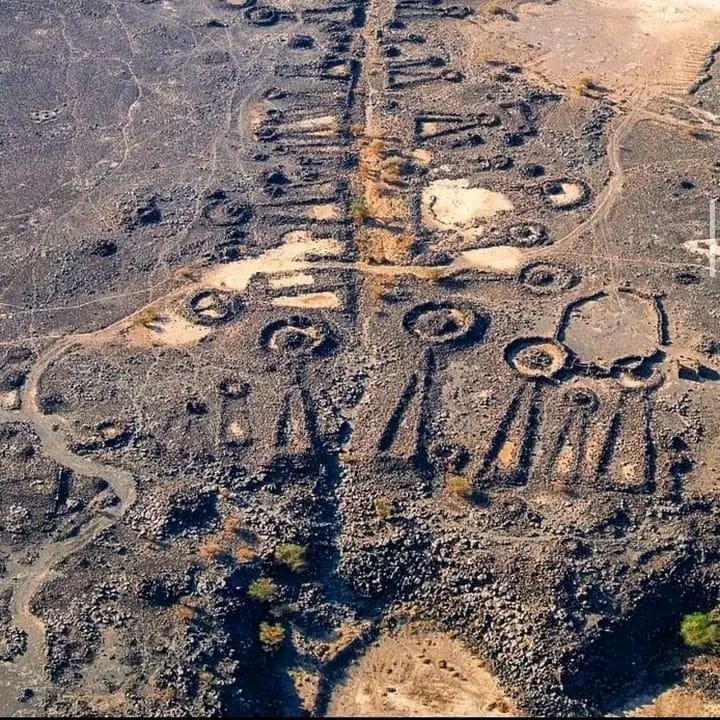Archaeological research has recently unveiled one of the most intriguing discoveries in the Arabian Peninsula: a network of ancient “funerary avenues” dating back approximately 4,500 years. These pathways, stretching across vast expanses of northwest Saudi Arabia, provide a glimpse into the complex societies of the Bronze Age and their intricate relationship with the landscape.
Overview of the Funerary Avenues
Spanning a remarkable 160,000 square kilometers, these avenues connect major oases such as AlUla, Khaybar, and Tayma, areas that were vital for sustenance and survival in the arid environment. Flanked by over 11,000 tombs, the avenues were first identified through satellite imagery and have since been studied using ground surveys. These ancient pathways not only reflect sophisticated construction techniques but also underscore the social and spiritual dynamics of their creators.

Unraveling Their Purpose
The exact purpose of these funerary avenues remains a subject of debate among archaeologists. However, several theories shed light on their potential significance:
Ceremonial and Ritual Functions
The positioning of tombs along the pathways suggests a possible ceremonial or spiritual purpose. The avenues may have served as processional routes, connecting settlements to sacred sites or burial grounds. This alignment could indicate a deep-seated belief system, where the journey along the avenue held spiritual significance.

Connectivity and Trade
The funerary avenues likely functioned as trade and transportation routes, linking communities across the Arabian Peninsula. The proximity of these pathways to ancient oases highlights their practical importance for facilitating communication, trade, and the movement of goods and people.
Territorial and Pastoral Use
The pathways may have acted as territorial markers, delineating areas controlled by specific tribes or groups. Additionally, they could have been used as herding trails, guiding livestock toward water sources or seasonal grazing lands. The presence of tombs along these routes reinforces the possibility that they marked critical social or environmental locations.

Tomb Design and Architectural Sophistication
The tombs lining the funerary avenues display an impressive range of designs, reflecting the diversity of their builders:
- Ring Cairns: Circular stone mounds used as burial chambers.
- Pendant-Shaped Tombs: Elaborate structures with distinctive shapes, possibly signifying family or societal status.
Radiocarbon dating places the construction of these tombs between 2600 and 2000 BCE, indicating their significance during a formative period of human civilization. Remarkably, many of these structures remain well-preserved, testifying to the engineering skills and cultural priorities of their creators.
Cultural and Historical Implications
This discovery offers profound insights into the social complexity and environmental adaptability of ancient Arabian societies. Similar to the mustatils (rectangular stone structures thought to have ritual significance), the funerary avenues suggest a deep connection between humans and their natural surroundings. They represent a society capable of large-scale coordination and a nuanced understanding of spiritual and territorial dynamics.

These avenues also highlight the role of northwest Arabia as a cultural crossroads, connecting the civilizations of Mesopotamia, the Levant, and the broader Arabian Peninsula.
Future Research and Preservation
The funerary avenues are a key focus of Saudi Arabia’s Journey Through Time initiative, which aims to preserve and promote the region’s rich archaeological heritage. Collaborations between organizations such as the Royal Commission for AlUla (RCU) and international research teams are uncovering new details about the avenues’ construction, use, and significance.
Advances in satellite technology, ground-penetrating radar, and 3D mapping promise to shed more light on these ancient pathways, unraveling the mysteries of the Bronze Age societies that built them.
A Glimpse into a Forgotten World
The funerary avenues of Saudi Arabia offer a unique window into the past, where roads and tombs intertwine to narrate stories of life, death, and connectivity in an ancient desert landscape. They are a testament to the ingenuity of early societies and a reminder of humanity’s enduring relationship with the environment. As research continues, these avenues will undoubtedly reshape our understanding of ancient Arabia’s role in the history of civilization.

